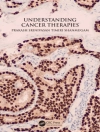This handbook offers timely investigation of current pharmaceutical trends, clinical guidelines, novel treatments, and ongoing pipeline developments, including ground-breaking advances in the use of novel oral anticoagulants. Atrial fibrillation (AF) affects an estimated 1–2% of the population and is the most common cause of sustained cardiac arrhythmia. Critically, the number of patients developing AF is expected to double in the next five decades, leading to increased incidence of stroke, heart failure and other serious thromboembolic events.
Содержание
Epidemiology of atrial fibrillation.- Pathogenesis of atrial fibrillation.- Classification, diagnosis, and assessment of atrial fibrillation.- Rate and rhythm control strategies for atrial fibrillation.- Anticoagulant treatment strategies for atrial fibrillation.












